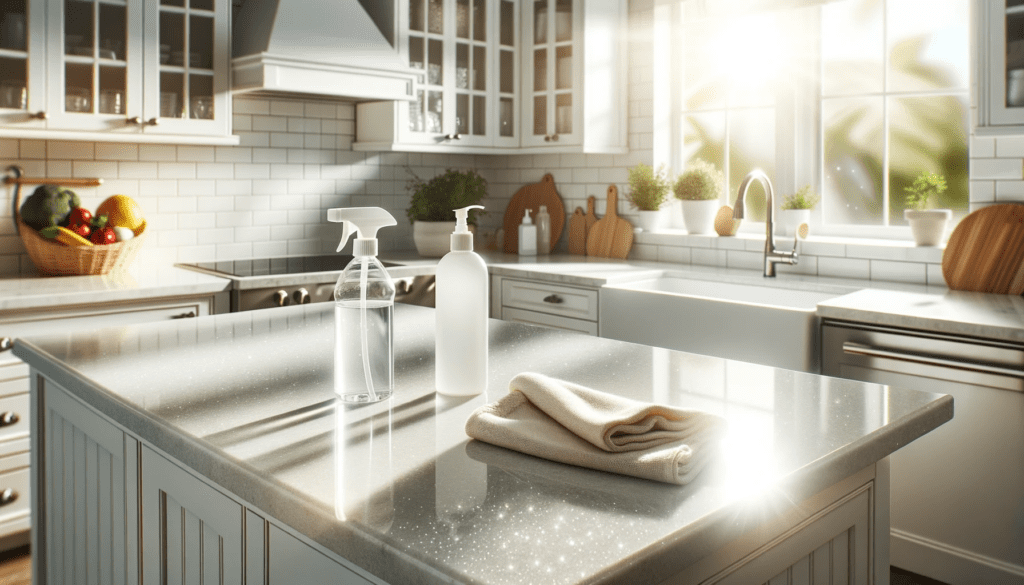
To finish wood countertops, sand the surface smooth and apply a suitable food-safe sealer. Ensure the sealing coat is evenly spread and allow it to cure.
Wood countertops add warmth and natural beauty to any kitchen. They require a proper finish to protect them from water, stains, and wear. Selecting the right finish for wood countertops not only preserves their appearance but also ensures their durability.
Finishing wood countertops involves several critical steps: preparation of the surface, choosing the right sealant, and meticulous application. The key to a successful finish lies in careful sanding, which smooths the wood and prepares it for the sealing process. A food-safe sealer like mineral oil, beeswax, or a combination of both is essential for surfaces that will come into contact with food. Applying the finish correctly seals the wood, providing a durable and attractive surface that can withstand the rigors of kitchen use. Regular maintenance and reapplication of the sealant will keep the countertops looking their best for years to come.
Selecting The Right Finish For Wood Countertops
Selecting the Right Finish for Wood Countertops is a crucial step in ensuring the beauty and longevity of your kitchen centerpiece. The right finish not only protects the wood but also accentuates its natural patterns and colors.
Considering Durability And Usage
The daily demands on kitchen surfaces mean the chosen finish must withstand heavy use. Consider factors such as water resistance, scratch resistance, and ease of repair.
- Water resistance: Important for protection against spills and moisture.
- Scratch resistance: Keeps countertops looking pristine even under heavy usage.
- Ease of repair: Allows for simple fixes in case of damage.
Comparing Oil, Varnish, And Wax Finishes
| Finish Type | Pros | Cons |
|---|---|---|
| Oil | Enhances grain, easy to apply | Requires frequent reapplication |
| Varnish | Durable, water-resistant | Longer drying time |
| Wax | Simple to repair, natural look | Less durable, not highly water-resistant |
Evaluating Food Safety And Maintenance Requirements
For countertops used in food preparation, finishing choices must meet safety standards. Seek out products specifically labeled as food safe.
Maintenance should align with your lifestyle for ease of upkeep. Regular maintenance extends countertop life and keeps it hygienic.
- Food safe: Check for non-toxic finishes that are safe for food contact.
- Lifestyle fit: Choose a finish that suits your cleaning habits and usage.
- Regular care: Protect your investment with consistent maintenance.
Preparing The Wood Surface
Before transforming wood countertops into show-stopping pieces, the initial step is crucial. Prepping the wood surface sets the stage for a smooth, lasting finish. This guide delves into the essentials of wood countertop preparation, ensuring the surface is ready to embrace the chosen finish effectively.
Cleaning And Sanding Basics
Start with a clean slate. Any debris or residue on the wood surface must go. Here’s how to start:
- Wipe the wood with a damp cloth to remove dust.
- Allow the wood to dry completely.
- Begin sanding with a medium-grit sandpaper.
Sanding lays the groundwork for a flawless finish. Follow these steps for the best results:
- Use even pressure and sand in the direction of the grain.
- Change sandpaper often to avoid clogging.
- Clean the surface again to remove any sanding dust.
Identifying Imperfections For Correction
A keen eye spots issues needing attention. Look for:
- Scratches: Activate brighter lighting to catch them.
- Dents: Feel the surface for any irregularities.
- Holes: Fill these before final sanding.
Ensure the wood is flawlessly smooth; any imperfections now will haunt the final finish.
Selecting The Correct Grit Sequence
Sanding requires a sequence from coarse to fine for perfection. Utilize this table for guidance:
| Step | Grit Level | Use |
|---|---|---|
| 1 | 80-100 | Remove old finish, level out surfaces |
| 2 | 120-150 | Initial smoothing, erasing scratch marks |
| 3 | 180-220 | Final smoothing, preparing for finishing |
For a sleek, professional touch, finish with a superfine grit of 320 or higher.
Applying The Finish
Applying a finish to wood countertops seals their beauty and protects them from daily wear. The right finish keeps countertops looking their best for years. Below are the steps for a flawless application. Follow these instructions carefully.
Step-by-step Application Procedures
- Sand the surface: Start with a medium-grit sandpaper and progress to fine-grit.
- Clean thoroughly: Remove all dust with a tack cloth for a clean surface.
- Apply the first coat: Use a brush or cloth, moving along the wood grain.
- Let dry: Refer to the product’s instructions for the correct drying time.
- Sand again lightly: Use fine-grit sandpaper for a smooth base before the next coat.
- Repeat: Apply additional coats for a stronger finish.
- Final inspection: Check for missed spots or drips and retouch if necessary.
Tips For A Smooth, Even Coat
- Maintain a wet edge: Overlap each stroke to avoid marks and lines.
- Avoid heavy coats: Thinner layers dry better and reduce drips.
- Use the right tools: High-quality brushes or applicators minimize streaks.
Drying Times And Conditions
| Finish Type | Drying Time | Conditions |
|---|---|---|
| Oil-Based | 6-8 hours | Well-ventilated, 70°F, low humidity |
| Water-Based | 2-4 hours | Well-ventilated, 70°F, low humidity |
| Polyurethane | 24 hours | Well-ventilated, above 65°F, 50-70% humidity |
Check the manufacturer’s recommendations for specific drying times. Adequate drying ensures a durable, beautiful finish.
Curing And Polishing The Countertop
Properly finishing wood countertops transform them from raw material into a stunning and durable kitchen surface. This part of our guide focuses on the final stages: curing and polishing. Both steps are crucial for a resilient and attractive finish.
Understanding Curing Times
Curing is the process where a finish hardens and reaches its full durability. Different finishes have varied curing times, typically between several days to a few weeks. Knowing these times is critical for a successful application and long-term protection.
- Oil finishes: They may feel dry within hours. Full cure can take up to 30 days.
- Lacquers and varnishes: Dry within 24 hours. Full cure within 1-2 weeks.
- Epoxy: Sets in a few hours. Fully cures in approximately a week.
Buffing To A High Shine
Once the countertop is cured, buffing creates a lustrous shine. The right tools and techniques are essential.
- Begin with a clean, dry surface.
- Use a low-speed buffer or polish by hand with a soft cloth.
- Apply a fine polishing compound and work in a circular motion.
- Finish with a polishing pad for a smooth, high-gloss finish.
Maintaining The Finish Post-curing
After curing, regular maintenance keeps wood countertops looking fresh.
- Clean spills immediately to prevent staining.
- Apply a coat of quality mineral oil every few months to nourish the wood.
- Avoid cutting directly on the surface to prevent scratches.
Mindful use and care will extend the life of your countertop’s finish. Enjoy the warm, natural beauty of wood as a centerpiece in your kitchen for years to come.
Maintenance And Care For Longevity
Wood countertops bring warmth and character to a kitchen, but they require careful upkeep. Proper maintenance and care ensure these surfaces stay beautiful and durable. Let’s dive into best practices for keeping wood countertops in prime condition.
Routine Cleaning Recommendations
Keep wood countertops clean and hygienic with these simple steps:
- Use a soft cloth or sponge to wipe the surface.
- Clean with a mix of warm water and mild soap.
- Wipe dry immediately to prevent water damage.
- For stubborn spots, apply white vinegar with a clean cloth.
Dealing With Scratches And Refinishing
Slight scratches can appear over time. Here’s what to do:
- Lightly sand the scratch.
- Clean the area to remove dust.
- Apply a matching wood oil or wax.
- Let it dry before using the countertop again.
For deeper scratches, a complete refinishing might be necessary. Sand the entire surface, clean it, and then oil or wax it thoroughly.
Best Practices For Daily Use
To extend the life of your wood countertops, follow these tips:
| Action | Recommendation |
|---|---|
| Chopping | Always use a cutting board. |
| Hot Pots | Place on trivets, not directly on the wood. |
| Liquids | Wipe spills immediately. |
| Heavy Items | Avoid dragging across the surface. |

Credit: lakesidesurfaces.com
Common Mistakes To Avoid
When crafting the perfect wood countertop, each step is crucial. Knowing what not to do is just as important as knowing the right techniques. Let’s dive into the common mistakes you need to steer clear of to achieve that seamless finish on your wood countertops.
Application Errors Leading To Poor Finishes
Applying the finish to wood countertops can be tricky.
- Avoid uneven coats: Apply finish in thin, even layers.
- Don’t rush the process: Allow adequate drying time between coats.
- Ignoring the directions: Always follow the manufacturer’s guidelines.
- Skipping the test run: Test the finish on a scrap piece first.
Missteps In Sanding And Preparation
Sanding and surface prep set the stage for a beautiful finish.
- Start with the right grit sandpaper.
- Progress gradually to finer grits.
- Clean the surface thoroughly before applying the finish.
- Never skip initial sanding, even if the wood looks smooth.
Maintenance Misconceptions
Proper maintenance ensures the longevity of your countertop’s beauty.
| Misconception | Reality |
|---|---|
| Water won’t harm the finish. | Mop up spills right away to prevent damage. |
| No need for re-application of finish. | Regularly reapply finish as needed. |
| Cutting directly on the surface is fine. | Use cutting boards to prevent scratches. |

Credit: www.homedepot.com
Frequently Asked Questions On How To Finish Wood Countertops
What Is The Best Finish For A Wood Countertop?
The best finish for a wood countertop is a food-safe, water-resistant oil or sealant, such as tung, mineral, or linseed oil, to protect and enhance the wood’s natural beauty.
What Should I Use To Seal My Wood Countertop?
Use food-safe mineral oil, tung oil, or a water-based polyurethane sealer for wood countertops. Regular maintenance helps keep the surface clean and protected.
What Do You Put On Top Of Wood Countertops?
To protect and enhance wood countertops, apply food-safe mineral oil, beeswax, specialized wood countertop finishes, or epoxy for a waterproof seal. Regular maintenance with these can preserve the wood’s beauty and durability.
Can You Use Polyurethane On Wood Countertops?
Yes, you can apply polyurethane on wood countertops to protect them and enhance durability. Ensure proper ventilation and follow the manufacturer’s instructions for the best results.
Conclusion
Sealing your wood countertops is a craft that enhances your kitchen’s warmth and character. From choosing the right finish to applying it with care, each step brings beauty and longevity. Cherish your wooden surfaces by protecting them properly—your effort today preserves their splendor for years to come.
Embrace the natural elegance of wood and let your countertops shine!




















